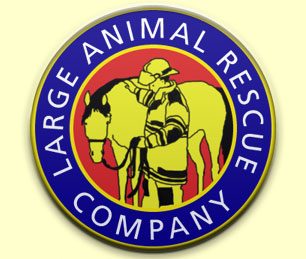The public has an expectation that when they call 9-1-1, someone will be sent to help them with their problem. The fire service has evolved into an emergency services organization. Therefore, firefighters spend countless hours training to respond and adapt to almost any type of emergency or situation.
How to Choose a Training Program
So you want technical LAR training, how do you choose a training program? First of all, keep in mind that there are as many training programs for LAR out there now as there are horse trainers and churches. With this variety of programs, you can certainly choose an approach that you feel comfortable with. But here are some questions to ask:
Has the training program been reviewed by some formal entity?
This includes a review of equipment applications, rope systems, technique, and scene management.
Is there a review process to evaluate the effectiveness of the training?
Are the instructors qualified to teach LAR? Certified by whom?
Are the instructors experienced with real rescues?
Are the instructors experienced with multi-agency responses?
Is the training presented in a logical progression, building a
foundation that introduces concepts and adding to it manipulative skills
and techniques that are proven in the field?
Does the training demonstrate consistency with training for other
emergency incidents, or does it conflict with standardized training
modules?
Does the training show readily available equipment options? And introduce commercially made equipment options?
Does the training utilize live animals, and, are you comfortable
with seeing a live animal used for extrication exercises?
What is the ratio of teacher to student?
Is the training program designed to give each person hands-on?
And finally, does the training prepare you to respond with a
sense of appropriate use of strategy, equipment, and technique?
“I attended the LAR course taught by John and Deb in Black Diamond, WA September 14th and 15th. It was a great course and my partner and I learned a lot. Ironically, on September 18th, I was the only ACO working and was paged for a horse trapped in an Elk wallow that normally consisted of several feet of mud, but with nearly 3″ of rain in the past 48 hours, now had 2′ of standing water on top. I felt totally confident in my initial scene assessment, plan, and ability to utilize available equipment for a good outcome. The horse was successfully removed and recovered for 24 hours at the vet clinic for dehydration and hypothermia, but had no other injuries!”
Course Description
There are an estimated 9.2 million horses in the United States. With the number of horses on the roads and trails increasing every year, there has been an increase in the number of emergency incidents involving large animals. LAR incidents can be resolved with technical skills applied with an understanding of horse behavior and characteristics.
The Large Animal Rescue LLC offers an 16-hour course that teaches the students rescue concepts, scene management, operations, and equipment. It covers trailer-incidents, trail-incidents and stable-incidents. Rescuer safety is emphasized throughout the course.
This course will give the rescuers a basic set of tools and knowledge to perform a large animal rescue. The techniques taught in this course are based on the equipment carried on most type 1 (standard fire fighting) engines. This course will teach how to improvise straps and lifting harnesses out of fire hose and how to adapt rope systems for use with large, unpredictable animals. The course builds on existing fire service training such as Rescue systems 1 (Heavy Rescue), Vehicle Extrication, Confined Space Entry, and Haz Mat. With these technical skills, blended with an understanding of animal behavior, LAR can be a routine response. p>
LAR incidents may involve a multi-agency response. This course teaches how each agency interacts and emphasizes the importance of cooperation and teamwork. The incident is best managed through “SEMS” (Standard Emergency Management System), an organized structure that allows each agency to contribute certain resources towards a common goal. Students have an opportunity to practice this during scenario training.
Students will be taught the safety and danger zones around the animals. Large animals are dynamic and unpredictable. In stressful situations they act and react differently. Rescuers need to be prepared for these unpredictable reactions. The equipment and systems used need to be adaptable to these changes.
